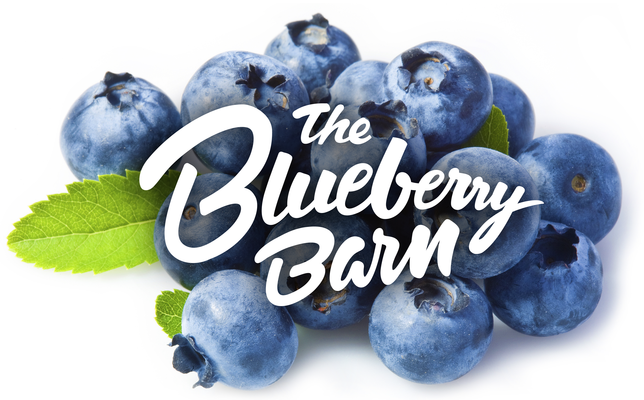In the Spotlight: Chocolate Covered Blueberries
Posted by Ann Wildes at
I just wanted to tell y’all about one of The Blueberry Barn’s great products: our chocolate-covered blueberries.

This delicious—and nutritious—treat makes a great snack for when you’re out-and-about or for you to sneak when the kids are out playing.
In fact, these chocolate-covered blueberries are perfect for y’all who are starting on a new diet. The benefits of chocolate—both milk and dark—can really blow your mind!
According to most all scientific studies, dark chocolate has some serious health benefits. Rich in flavonoids, dark chocolate can help low blood pressure and reduce the risk of a stroke. Now, if my aunt had known that, I reckon she would’ve made more of her scrumptious chocolate cakes!
These same flavonoids help stop bad cholesterol from oxidizing, which keeps your arteries from getting all clogged up. It is also said to increase good cholesterol. Now, talk about some cholesterol-kicking superpowers!
Flavonoids, also called bioflavonoids (their name comes from the Latin word flavus, which means yellow, their natural color) are “a class of plant and fungus secondary metabolites.” Flavonoids, especially flavanoids like the catechins, are the most common group of polyphenolic compounds in your diet and are found basically everywhere in all kinds of plants.
The far-flung distribution of flavonoids, their variety and pretty low toxicity in comparison to other active plant compounds, like alkaloids, for example, mean that many animals and humans consume large amounts in their diet.
Blueberries and dark chocolate are two of the many foods that have a very high flavonoid content.
There’s also this special chemical in chocolate called theobromine, which is not only a lasting stimulant that improves your bad moods, but has also been shown to keep down coughing by acting on the vagus nerve, a certain nerve that acts as a messenger from the central nervous system to the brain.
You see, that’s why you ought to give your loved ones an extra piece whenever they have the croup!
Theobromine is a rather bitter alkaloid from cacao plant. It is found in chocolate and plenty of other foods, like the leaves of the tea plant and the kola nut. It’s categorized as a xanthine alkaloid, like theophylline and caffeine. The difference is that caffeine has another methyl group.
Despite its name, the Theobromine has no bromine in it—theobromine comes from Theobroma, the name of the genus of the cacao tree, which means “food of the gods”. The suffix -ine is given to alkaloids and some of the other basic compounds that contain nitrogen.
Now, for all us aging folks out there, Alzheimer’s disease is definitely something we fear. But chocolate contains a chemical called epicatechin, something also found in green tea, which may protect your brain from sticky proteins or amyloid plaques from forming and playing an important role in the development of Alzheimer’s.
Amyloid plaques are certainly not your body’s friend. They’re clumps of beta-amyloids, which demolish the connections between nerve cells. They’re found in the brains of patients with Alzheimer’s disease, an incurable dementia that affects your thinking process, memory, and behavior.
But chocolate has epicatechin to save the day!
Epicatechin is from the catechin chemical family, which is derived from catechu, the tannic juice of the Mimosa catechu. Catechin a flavanol, a type of antioxidant and natural phenol. It’s a plant secondary metabolite. It belongs to the group of flavanols, which is part of the flavonoid chemical family. Currently, the catechins found in cocoa are under preliminary research for the possibility that they can affect the risk of cardiovascular diseases.
As for the difference between milk and dark chocolate, Sari Harrar wrote an article for Consumer Reports that says, “Whether you’re a milk or dark chocolate fan, go easy. A 1.55-ounce bar of milk chocolate has 235 calories, 13 grams of fat, and 22 grams of sugar. The same amount of 70 percent dark chocolate has 263 calories, 12 grams of fat, and 11 grams of sugars.”
So while it seems that milk chocolate is actually lower in calories than dark chocolate, benefits like less fat, lower amounts of sugar, and extra fiber are present in dark rather than milk.
The smooth creaminess of milk chocolate has always been one of its benefits in my mind, though not necessarily in the health department. It’s the milk chocolate that makes the best frosting for my triple chocolate cupcakes!
Then there’s the blueberries, those sweet, healthy little blue dynamos. Chock-full of antioxidants and other great nutrients, blueberries themselves pack quite a punch!
Antioxidants are compounds that suppress oxidation. Oxidation is a chemical reaction that can give rise to free radicals, thus leading to certain chain reactions that may cause damage to the cells of organisms. Antioxidants like thiols or ascorbic acid end the chain reactions.
And both blueberries and chocolate triumph over oxidation!
Another great—no, make that wonderful benefit of both blueberries and chocolate is that they help reduce, or perhaps even reverse, aging! And I know we all want to get rid of those gray hairs and wrinkles, don’t we?
In hopes of proving it possible to reverse aging, some scientists across the pond in England took a look at a class of genes called splicing factors and dysfunctional cells called senescent, which pile up as we people get older. Applying resveratrol, which is found in not only dark chocolate and blueberries, but also red grapes, the researchers found that the splicing factors turned back on and, at the same time, reversed the signs of aging!
So not only can you fulfill your New Year’s resolution to eat healthier, you can shave off a couple years and save your body from some very harmful stuff!
So why don’t y’all come on by The Blueberry Barn and grab yourself a bag or two of our milk and dark chocolate covered blueberries today!
Share this post
- Tags: blueberries, Chocolate, foods, georgia grown, nutrition
